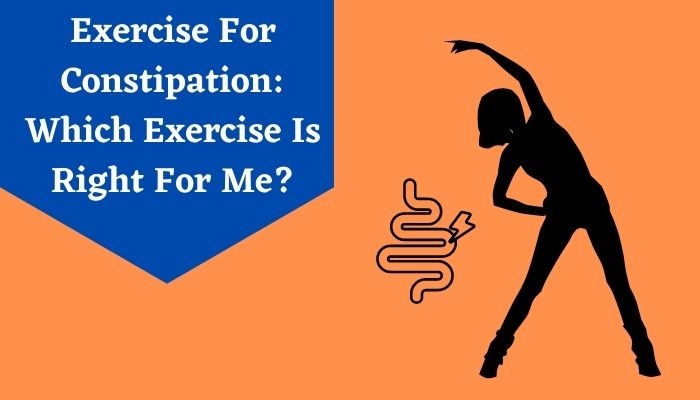Many people would think that constipation is not a significant health problem. But how aware are we that constipation is the core reason for many major problems? Say, if any proper measures are not taken at the initial stage itself, then it might even lead to life-threatening risk.
There can be many reasons for one to have a constipation problem. Getting the body wastes pushed out at least once or twice daily is very important. But, most of them find even one time pooping a big challenge.
Although there are many medications available for treating your constipation problem, they can help you only to an extent, and definitely, there will be side effects to impact you over the days if you continue to take medications for constipation. So, how could we get rid of this problem?
There are many exercises for constipation to help you poop without any difficulties and regularly too. Unfortunately, many people are not aware of such exercises, which is a major drawback. Before we get to see the exercise for constipation, here are some of the causes that everyone should know:
Reasons for Constipation and Hard stool
Here are some of the major causes for hard stool:1. Undigested Food
There are a lot of reasons for hard stools. One of the main reasons is the undigested food materials without water, which need to be eliminated from the intestines.Gastrointestinal movements and motility are also required to help stool move along the digestive tract to eliminate stool. Any problems with this digestive process could cause constipation.
2. Medications
Medications can be another major reason for constipation to happen. As a result of the side effects of some medicines, one might suffer from constipation.Medications including drugs like aluminum and calcium-containing antacids, anticholinergics, antispasmodics, diuretics, anticonvulsants, calcium channel blockers, and iron supplements can cause constipation.
3. Food Habits and Lifestyle
Besides the above-said cause, constipation can also be a result of your food habits and lifestyle. Today in this fast-moving world, people rush to take fast foods instead of properly cooked foods; they also mostly take tin foods, which are not recommendable over the long run. Besides, working overnight and sleeping very few hours a day can also cause constipation. Drinking insufficient water and taking a low fiber diet is also one of the reasons for constipation. Too much traveling, sudden diet changes, and low or irregular physical activities can also cause constipation.4. Other Causes
Factors like aging, digestive tract problems, anatomic problems, diverticulitis, celiac disease, hormone imbalance, pregnancy, prostate gland inflammation are also other reasons for constipation.If the causes are not identified at the right time and treated, then it might lead to a medical emergency.
Constipation with a hard stool can cause abdominal pain, pain passing stools, difficulty passing gas, and strain when passing stool. In addition, such symptoms can cause damage to the digestive tract lining and other problems, including hemorrhoids, rectal prolapse, anal fissures, and fecal impaction.
Also Read: How to Handle Constipation at Home: Symptoms and Treatments
Yoga For Constipation Relief Instantly
Here are some simple and most uncomplicated exercises that can help you relieve constipation immediately and get good relief.1. Cardio Exercises

This exercise relates to the heart and blood vessels. It's a type of aerobic exercise that can help the cardiovascular system. The cardio exercises are simple and easy to do. Right from children to elderly people, anyone can easily do cardio exercises, which tremendously help get relief from constipation. Common and easy cardio exercises are walking, running, jogging, cycling, and swimming.
2. Pelvic Floor Exercise
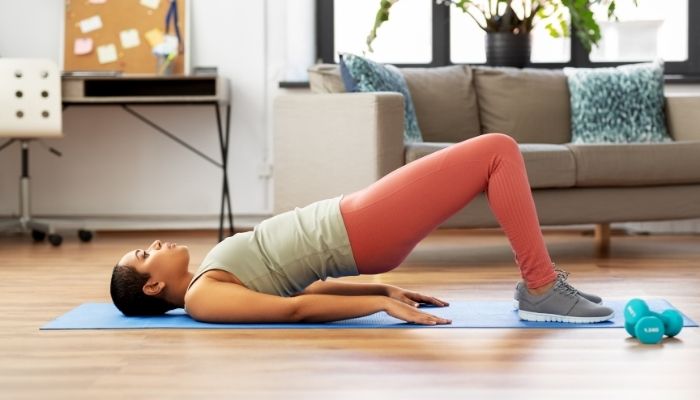
This exercise will cover the pelvic region, and it helps the pelvic organs like bowel and bladder, and uterus in women to function well. These muscles, known as core muscles, are strengthened, which helps in easy bowel movement. When the pelvic floor muscles are strengthened, the muscle coordination and functions are improved, and this can help better evacuation.
Some of the notable pelvic floor exercises include:
3. Bird Dog
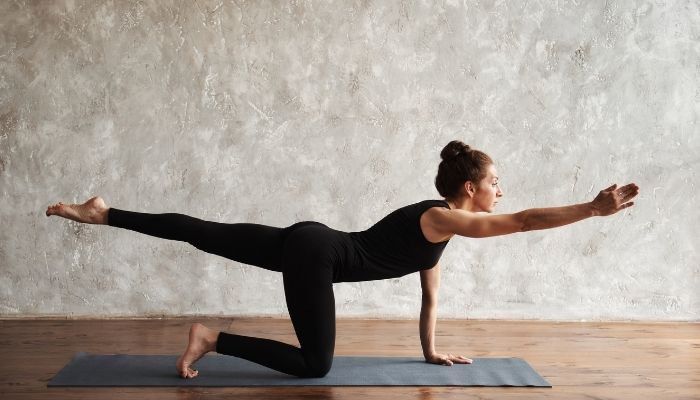
This exercise begins with the dog posture of placing your hands and legs on the floor. Now, raise your right arm and left leg back in the way they are parallel to the floor for a few seconds and then return to the starting position. Now change to the left arm and right leg in a similar way for a few seconds. Repeat this exercise for a few minutes.
4. Bridge

Lie on your back while your legs are outstretched. Now bend your knees so that both knees are pointed up with feet on the floor. Now extend your arms along your body's sides with palms facing down. Then push down your arms and feet when simultaneously lifting the cheek. Try to hold this posture for at least 30 seconds. Now release the pose, let your back touch down on the floor, and extend your legs.
5. Breathing Exercise

How effective a breathing exercise is? Deep breathing exercises can help relax your mind and relieve you from stress or depression. Remember, stress and anxiety can be the major problem for constipation, which most of us fail to notice. At the same time, there could be no best exercises like deep breathing exercise, which can help you to relax your mind and of course, do many good changes to your health. There are many breathing exercises like alternate nostril breathing, diaphragmatic breathing, 4-7-8 breathing, and many others. You are absolutely flexible in choosing your comfortable breathing exercises. However, the simplest thing you can do is simply follow your normal breath and just try to inhale and exhale with a time count as long as you can slowly.
6. Digestive Massage
Yoga helps your digestive system through twisting postures, inversions, and forward folds. Though which it massages your digestive organs, boost blood flow and oxygen delivery, aid peristalsis, and encourage faeces to move through your system with these poses. Practicing yoga regularly can lead to regular, healthy bowel motions.
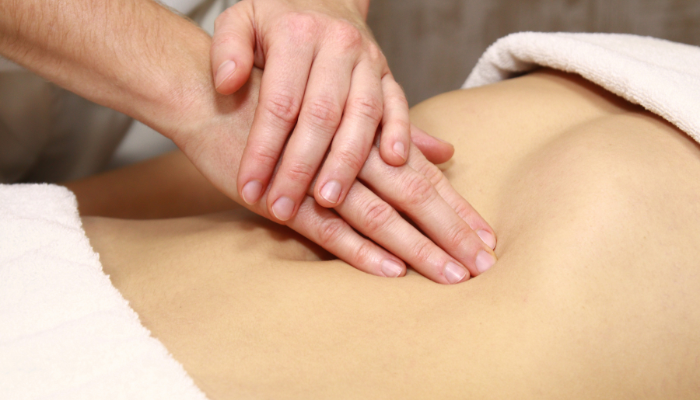
People with bloated stomach, have bump up tummies, or just have a little extra body fat around the middle may find twists exceedingly difficult or uncomfortable.
7. Child's Pose

1. Bring your legs to your chest while lying on your back.
2. Then extend your left leg out in front of you. 3. While keeping your shoulders flat on the floor, bring your bent right leg to the left across your torso. 4. Turn your head to the right. 5. Switch sides after holding.
8. Wind Relieving

- Hug your legs into your chest while reclining on your back.
- You can also extend one leg outward.
- Switch after a minute or two of holding.
9. Matsyasana Twist
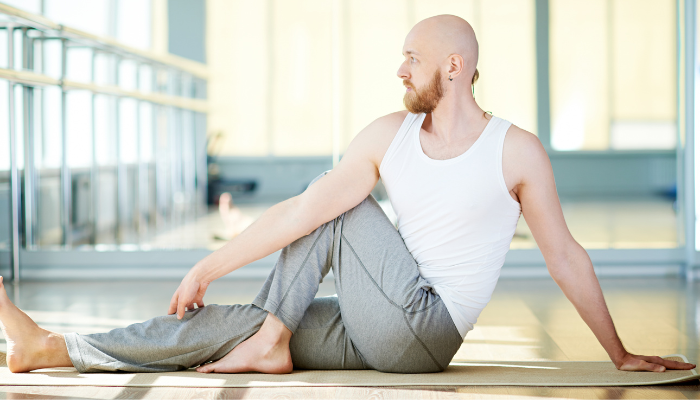
1. This seated twist helps with detoxification by simulating your digestive organs. 2. Begin by sitting in a comfortable position. 3. Bend your left leg and place your left foot over your right knee on the ground. 4. Tuck your right foot near your buttocks by bending your right knee. 5. Twist your body, gazing over your left shoulder, with your right elbow near your left knee. 6. Switch sides after holding on to
10. Crescent Twist
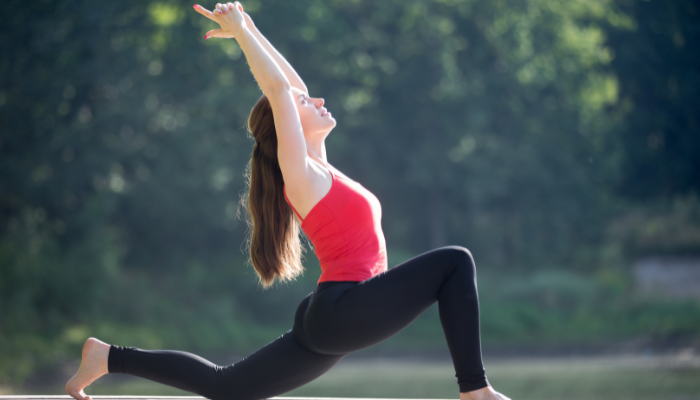
- Place your hands in prayer position and twist toward your bent leg, pressing your arm towards the outside of the bent leg.
- Hold.
- Exit the stance, switch sides, and repeat on the other side.
